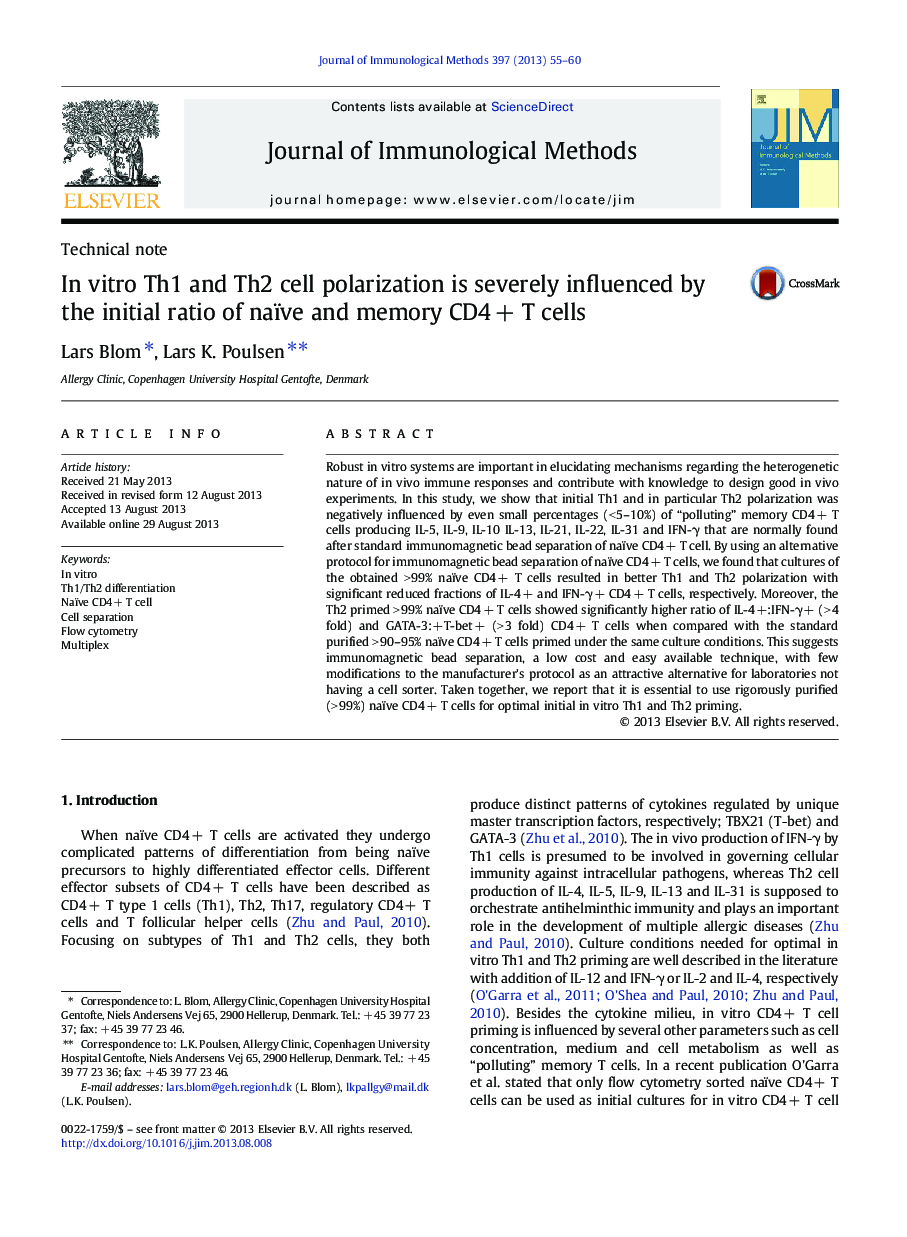| Article ID | Journal | Published Year | Pages | File Type |
|---|---|---|---|---|
| 8418015 | Journal of Immunological Methods | 2013 | 6 Pages |
Abstract
Robust in vitro systems are important in elucidating mechanisms regarding the heterogenetic nature of in vivo immune responses and contribute with knowledge to design good in vivo experiments. In this study, we show that initial Th1 and in particular Th2 polarization was negatively influenced by even small percentages (< 5-10%) of “polluting” memory CD4 + T cells producing IL-5, IL-9, IL-10 IL-13, IL-21, IL-22, IL-31 and IFN-γ that are normally found after standard immunomagnetic bead separation of naïve CD4 + T cell. By using an alternative protocol for immunomagnetic bead separation of naïve CD4 + T cells, we found that cultures of the obtained > 99% naïve CD4 + T cells resulted in better Th1 and Th2 polarization with significant reduced fractions of IL-4 + and IFN-γ + CD4 + T cells, respectively. Moreover, the Th2 primed > 99% naïve CD4 + T cells showed significantly higher ratio of IL-4 +:IFN-γ + (> 4 fold) and GATA-3:+T-bet + (> 3 fold) CD4 + T cells when compared with the standard purified > 90-95% naïve CD4 + T cells primed under the same culture conditions. This suggests immunomagnetic bead separation, a low cost and easy available technique, with few modifications to the manufacturer's protocol as an attractive alternative for laboratories not having a cell sorter. Taken together, we report that it is essential to use rigorously purified (> 99%) naïve CD4 + T cells for optimal initial in vitro Th1 and Th2 priming.
Related Topics
Life Sciences
Biochemistry, Genetics and Molecular Biology
Biotechnology
Authors
Lars Blom, Lars K. Poulsen,
